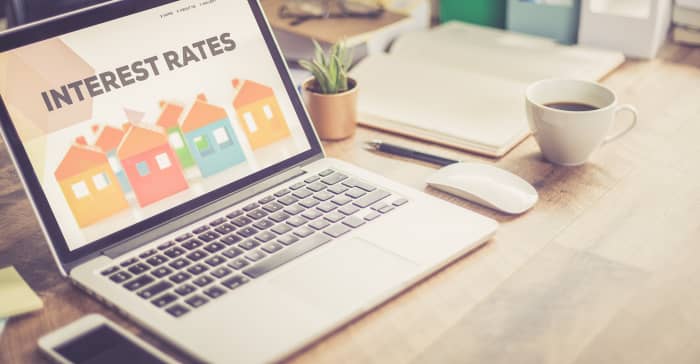The Fed’s next interest rate hike ‘might be the biggest in decades.’ Here’s one simple way you can profit from that

Some pros are speculating that the Fed could raise interest rates 1% at their July 26 meeting.
Getty Images/iStockphoto
Experts predict that the Federal Reserve will raise rates at their July 26 meeting, in a bid to curb soaring inflation. A recent Barron’s story noted that: “With inflation so hot, the Fed’s next rate hike might be the biggest in decades,” and other sources are speculating just how big the rate hike will be (seems likely that it will be a 75-basis-point interest rate increase, Reuters reports). At least one group of Americans have already benefited from these rates hikes, and will do so in the future too: savers. (You can find some of the best savings account rates here.)
Indeed, past rate hikes have already benefited savers with interest rates rising on checking accounts, savings accounts and certificates of deposit (CDs), says NerdWallet’s banking specialist Chanelle Bessette. “Consumers can take advantage of these rate increases by shopping around for a new account, with better interest rates, especially since higher interest rates can help mitigate the effects of high inflation,” says Bessette.
Currently, the most competitive online banks are continually leapfrogging each other, raising rates on savings accounts and CDs. “The top-yielding savings accounts have hit 2% and CDs can pull in 2.5% on a 1-year CD or as more than 3% on maturities of three years and longer. At the pace rates are rising, these high water marks will be quickly surpassed,” says Greg McBride, chief financial analyst at Bankrate.
What will happen to interest rates on savings accounts and CDs down the road?
Continued aggressive rate hikes will sustain the momentum we’re seeing in improving savings returns, says McBride. Indeed, McBride says returns on savings accounts and CDs are poised for further improvement in the months ahead. “With the biggest improvement being seen on savings accounts, money market accounts and CDs with maturities of 2 years and less,” says McBride. You can find some of the best savings account rates here.)
But, he adds: “While the rising savings yields are certainly welcomed, inflation still has to come down in a substantial way before those better returns truly stand out.”
To be sure, not everyone with a savings account will see their accounts increase as a result of the hike. In light of a 1% hike, many savers need to be mindful. Natalia Brown, chief client operations officer for National Debt Relief (NDR), says different banks may increase rates at different rates over time.
And, like McBride, she warns about how purchasing power will decrease if rates stay below growing inflation rates. “For people with growing debt, even those with a savings account, this hike worries me because many people are struggling to pay off existing debt while managing increasing living expenses, as we saw a 9.1% increase in June according to the Consumer Price Index report,” says Brown. Ultimately, trying to save in the current environment will become more difficult to yield value.
Still, it’s a worth effort, pros say, noting that everyone should have somewhere between 3-12 months of expenses in an emergency fund, even if the rate aren’t outpacing inflation. “It’s important to have liquid savings no matter what’s happening in the economy and even more so if there ends up being a downturn,” says Bessette.



